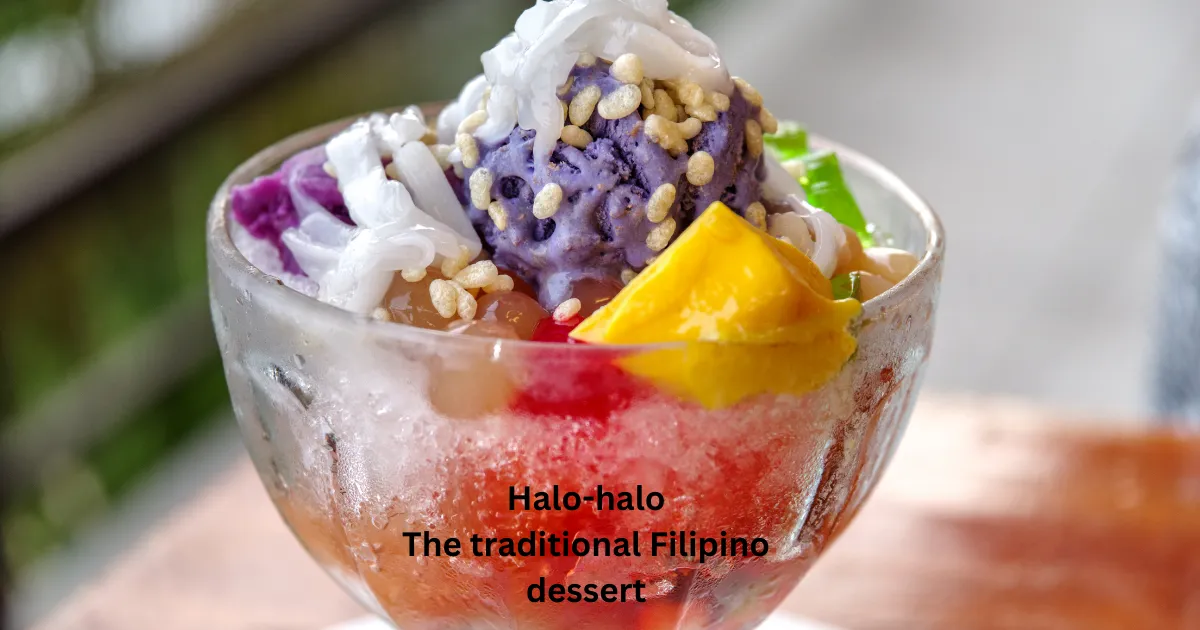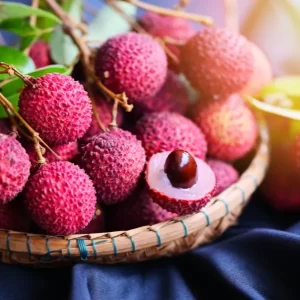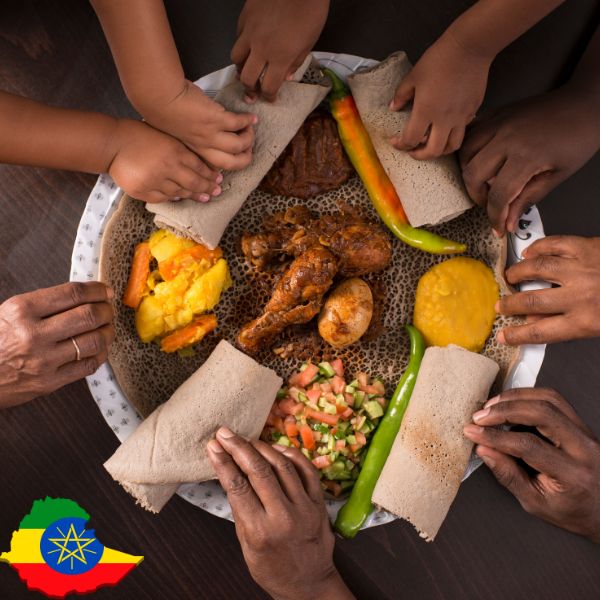Filipino Food: The culinary landscape of the Philippines is a vibrant tapestry woven with flavors, ingredients, and techniques that bear the marks of its rich history. Among the many influences that have shaped Filipino cuisine, Spanish colonization is a profound force that introduced new culinary traditions, which have since become deeply integrated into the country’s gastronomic identity.
This fusion of cultures over the centuries has resulted in a unique culinary heritage reflecting Filipino society’s complexity and diversity.
Historical Context of Spanish Colonization in the Philippines
Spanish colonization of the Philippines began in the late 16th century and lasted over 300 years. During this long period of colonization, they had significant cultural, social, and culinary influences from Spain on the archipelago.
The Spaniards introduced their food preferences, cooking techniques, and a variety of new ingredients to the local population. This melding of cultures enriched the Philippine culinary scene, creating a unique blend of Eastern and Western flavors.
Key Spanish Ingredients Incorporated into Filipino Cuisine – Filipino Food
Several ingredients introduced by the Spaniards have become staples in Filipino cooking. These include tomatoes, potatoes, onions, garlic, spices, and herbs like bay leaves and paprika. Spanish cuisine also introduced vinegar and soy sauce as bases for marinades and stews, which are now foundational to many Filipino dishes.
Popular Filipino Cuisine Dishes with Spanish Influences
Several Filipino foods and Filipino dishes bear the hallmark of Spanish influence, blending local ingredients with Spanish culinary traditions:
Arguably the most iconic Filipino dish, adobo is a savory stew made with meat (typically chicken or pork), marinated and cooked in vinegar, soy sauce, garlic, bay leaves, and black peppercorns. The Spanish influence is seen in the use of vinegar (a common preservative in Spanish cuisine) and the name itself, which comes from the Spanish word “adobar,” meaning to marinate.
Lechon refers to a whole pig roasted over an open fire, a festive dish that is a staple in celebrations across the Philippines. The practice of roasting pigs was introduced by the Spaniards and has become synonymous with Filipino feasts. The crispy skin and tender meat make lechon a beloved delicacy.
While traditionally Spanish, the Filipino adaptation of paella, known as “Paella Filipina” or “Arroz Valenciana,” incorporates local ingredients such as malagkit (sticky rice), seafood, chicken, and sausages, colored with turmeric or annatto seeds instead of saffron. It reflects the Filipino knack for incorporating local flavors into foreign dishes.
Caldereta is a hearty stew that bears a strong resemblance to Spanish stews. It typically includes goat meat (though beef, chicken, or pork can be used), potatoes, carrots, bell peppers, and liver spread or liver paste, simmered in a tomato-based sauce. The dish is often spiced up with chili peppers, making it a rich and robust meal.
Not to be confused with the Mexican soup, Filipino menudo is a colorful stew made with diced pork, liver, potatoes, carrots, bell peppers, and sometimes raisins, cooked in a tomato sauce. This dish is a common offering at Filipino gatherings and showcases the Spanish influence through its use of tomato sauce and offal.
Mechado is a Filipino beef stew, derived from the Spanish mechado, which involves a larded piece of beef. The Filipino version, however, uses chunks of beef marinated and stewed in a tomato sauce with soy sauce, bay leaves, and lemon or calamansi juice, often with potatoes and carrots. The term “mechado” comes from the Spanish word “mecha,” meaning wick, referring to the traditional cooking method of inserting strips of pork fat into slits in the beef.
Afritada is another tomato-based stew, similar to caldereta and menudo, but usually made with chicken or pork, potatoes, carrots, and bell peppers. The sauce is slightly sweeter and less spicy, making it a favorite among children and those who prefer milder flavors.
Morcón is a Filipino-style meatloaf or sausage, made from ground meat wrapped in pork or beef casings, distinctly different from the Spanish morcón, which is a type of chorizo. The Filipino version is typically served during special occasions and is a testament to the Spanish influence on Filipino celebratory feasts.
Pancit is a traditional Filipino noodle dish that comes in various forms and styles, often made from rice flour or other types of flour. The term “pancit” itself means “noodles” in Filipino. There are many regional variations of pancit, each with unique ingredients and preparation methods. Common types include Pancit Canton (stir-fried noodles with vegetables, meat, and seafood), Pancit Bihon (thin rice noodles sautéed with similar ingredients), and Pancit Malabon (thicker noodles with a distinct seafood sauce).
Pancit is often served on special occasions, such as birthdays and celebrations, as it symbolizes long life and good fortune. The dish can be customized with a variety of ingredients, including vegetables, meats like chicken or pork, shrimp, and sometimes topped with hard-boiled eggs. Each family may have its own recipe, making it a beloved and versatile staple in Filipino cuisine.
Though not directly descended from Spanish cuisine, sinigang reflects the broader influence of sour stews common in Spanish and Filipino kitchens. This sour soup is made with tamarind, tomatoes, and various vegetables, showcasing the Filipino palate’s affinity for sour flavors, a taste also appreciated in Spanish cooking.
Sisig is a traditional Filipino dish made from chopped, grilled, or fried pork that is often seasoned with vinegar, soy sauce, and spices. It typically includes parts of the pig such as the cheeks, ears, and sometimes even the liver, which gives it a unique texture and flavor.
The dish is usually served on a sizzling platter and can be garnished with onions, chili peppers, and sometimes a raw egg that is mixed in just before eating. Sisig is known for its savory and slightly tangy taste, making it a popular accompaniment to drinks and a favorite in Filipino cuisine.
Sopas is a Filipino soup made with chicken, various vegetables, and pasta, typically elbow macaroni. This comforting dish is reminiscent of Spanish soups and stews, adapted to Filipino tastes with the addition of milk to create a creamy broth.
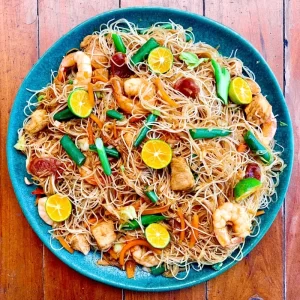
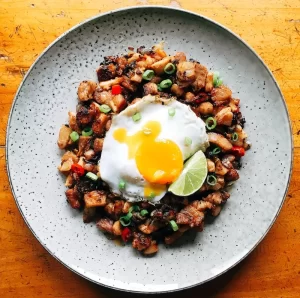
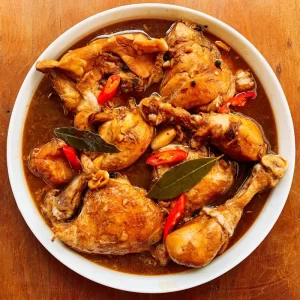
Culinary Techniques Adopted from Spanish Cooking
Filipino cuisine has adopted several Spanish culinary techniques, including braising, roasting, and sofrito—a sautéed mixture of garlic, onions, and tomatoes used as a base for many dishes. These techniques have been adapted to local ingredients and tastes, creating a unique culinary identity that bridges traditional Filipino and Spanish cooking methods.
Filipino Food in Street Markets
Filipino food in street markets is a vibrant and diverse culinary scene that offers a wide range of delicious and affordable snacks.
Street markets in the Philippines are often bustling with activity. Vendors serve food hot off the grill, making it an experience rich with sights, sounds, and aromas. This lively environment provides delicious meals and fosters cultural connections as friends and families gather to enjoy good food together.
Filipino street food offers delicious insight into the country’s culinary traditions and communal spirit.
Here are some of the most popular Filipino foods you can find in markets:
Isaw: This is barbecued chicken or pork intestines, skewered and grilled to perfection. It’s a popular street food, especially among younger Filipinos.
Kwek-Kwek: These are quail eggs coated in a bright orange batter and deep-fried until crispy. They are often served with a sweet and sour dipping sauce.
Fish Balls are bite-sized balls made from minced fish meat and other ingredients. They are deep-fried until golden brown and are often served with a spicy vinegar dipping sauce.
Kikiam: These are Chinese-influenced sausage rolls made from pork, flour, and vegetables. They are deep-fried until crispy and served with a sweet and sour dipping sauce.
Banana Cue: These are ripe bananas coated in a sweet batter and deep-fried. They are often served with a sugar sprinkle or a caramel sauce drizzle.
Balut is a fertilized duck egg boiled and eaten in the shell. It is a popular street food, especially among adventurous eaters.
Top Filipino Food Desserts You Must Try
Literally meaning “mix-mix,” Halo-Halo is a beloved Filipino dessert that’s as vibrant as it is flavorful. It’s a refreshing concoction made with crushed ice, evaporated milk, and various ingredients such as sweetened beans, coconut strips, sago (tapioca pearls), gulaman (agar jelly), and fruits like banana and jackfruit. Topped with a scoop of ube (purple yam) ice cream, leche flan (caramel custard), and sometimes even a sprinkle of toasted rice or pinipig (pounded young rice), Halo-Halo is a delightful treat, especially during the hot summer months.
Leche Flan is the Filipino version of the classic crème caramel, a rich and creamy dessert made from eggs, milk (often a combination of condensed and evaporated), and sugar, with a layer of soft caramel on top. It’s a staple at Filipino fiestas and a beloved finish to many meals.
Bibingka is a type of rice cake that’s especially popular during the Christmas season. It’s made with glutinous rice flour, coconut milk, and sugar, traditionally cooked in a clay pot lined with banana leaves, which impart a unique aroma to the cake. Bibingka is often served with butter, grated coconut, and sometimes slices of salted egg on top.
Puto is a steamed rice cake, often enjoyed as a snack or dessert. It comes in various flavors and colors, sometimes topped with cheese or salted egg. Puto is commonly served during festivities and is a perfect complement to savory dishes like dinuguan (pork blood stew).
Suman is a traditional Filipino rice cake made from glutinous rice cooked in coconut milk, often sweetened with sugar, and wrapped in banana leaves for steaming. It’s usually served with a sprinkle of sugar or a drizzle of latik (coconut caramel sauce) or ripe mangoes on the side.
Ube Halaya is a sweet and creamy dessert made from mashed purple yam (ube), cooked with coconut milk, condensed milk, and butter until thick. It’s often eaten on its own or used as a filling or topping for various Filipino desserts and pastries.
Kakanin refers to a variety of traditional Filipino rice cakes and sweets made from glutinous rice or rice flour, coconut milk, and sugar. Examples include biko (sweet rice cake with caramel topping), palitaw (sweet rice patties coated in grated coconut, sugar, and sesame seeds), and cassava cake (made from grated cassava, coconut milk, and cheese).
Sapin-Sapin is a layered dessert made from glutinous rice flour, coconut milk, and sugar, with each layer flavored and colored differently. Common flavors include ube, jackfruit, and coconut, resulting in a visually striking and delicious treat.
Turon is a popular Filipino snack or dessert made by wrapping slices of banana (typically saba variety) and sometimes a slice of jackfruit in a spring roll wrapper, which is then coated in brown sugar and fried until crispy. It’s a simple yet satisfying sweet treat.
Maja Blanca is a Filipino coconut pudding made from coconut milk, cornstarch, and sugar, often topped with latik. It’s a creamy, jelly-like dessert that’s a fixture in Filipino feasts and gatherings.
Cultural Significance of Filipino Food in Society
Filipino food has a central place in Filipino culture. It brings people together and celebrates the country’s diverse heritage.
Festive occasions, family gatherings, and even everyday meals reflect the communal nature of Filipino society, a trait that resonates with the Spanish emphasis on food as a social binder.
The fusion of Spanish and Filipino food traditions has enriched the country’s food culture, making it a vibrant part of its identity.
In conclusion, Filipino food is more than just a feast for the senses; it is a vibrant tapestry that weaves together the country’s rich history, values, and traditions. Each dish tells a story, each flavor evokes a memory, and each shared meal brings families and communities closer together.
So, whether you’re savoring the comforting taste of adobo, enjoying the festive spirit of lechon, or gathering around a hot bowl of sinigang, remember that you are partaking in a culinary heritage that reflects the heart and soul of Filipino society.
So, let’s celebrate the delicious significance of Filipino cuisine—dine, share, and bring the flavors of the Philippines into your home, one dish at a time!

